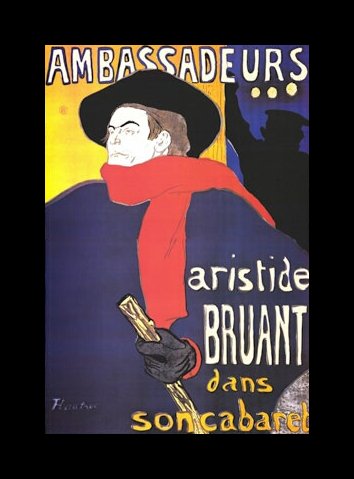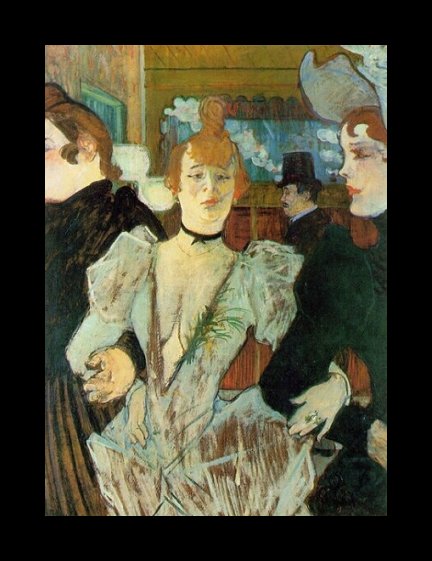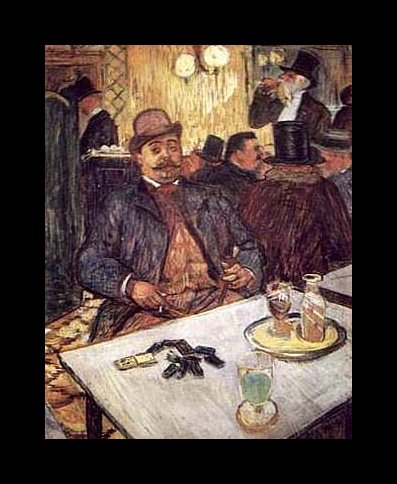Henri de Toulouse-Lautrec (1864-1901)
Get a Henri de Toulouse-Lautrec (1864-1901) Certificate of Authenticity for your painting (COA) for your Henri de Toulouse-Lautrec (1864-1901) drawing.
For all your Henri de Toulouse-Lautrec (1864-1901) artworks you need a Certificate of Authenticity (COA) in order to sell, to insure or to donate for a tax deduction.
Getting a Henri de Toulouse-Lautrec (1864-1901) Certificate of Authenticity (COA) is easy. Just send us photos and dimensions and tell us what you know about the origin or history of your Henri de Toulouse-Lautrec (1864-1901) painting or drawing.
If you want to sell your Henri de Toulouse-Lautrec (1864-1901) painting or drawing use our selling services. We offer Henri de Toulouse-Lautrec (1864-1901) selling help, selling advice, private treaty sales and full brokerage.
We have been authenticating Henri de Toulouse-Lautrec (1864-1901) and issuing certificates of authenticity since 2002. We are recognized Henri de Toulouse-Lautrec (1864-1901) experts and Henri de Toulouse-Lautrec (1864-1901) certified appraisers. We issue COAs and appraisals for all Henri de Toulouse-Lautrec (1864-1901) artworks.
Our Henri de Toulouse-Lautrec (1864-1901) paintings and drawings authentications are accepted and respected worldwide.
Each COA is backed by in-depth research and analysis authentication reports.
The Henri de Toulouse-Lautrec (1864-1901) certificates of authenticity we issue are based on solid, reliable and fully referenced art investigations, authentication research, analytical work and forensic studies.
We are available to examine your Henri de Toulouse-Lautrec (1864-1901) painting or drawing anywhere in the world.
You will generally receive your certificates of authenticity and authentication report within two weeks. Some complicated cases with difficult to research Henri de Toulouse-Lautrec (1864-1901) paintings or drawings take longer.
Our clients include Henri de Toulouse-Lautrec (1864-1901) collectors, investors, tax authorities, insurance adjusters, appraisers, valuers, auctioneers, Federal agencies and many law firms.


Unlike any other well-known artist of the 19th century, Lautrec was highly influenced by Japanese woodblock prints to create his distinctive posters and lithographs. There are some 360 total works in his portfolio, the most popular of which were turned into posters at that time. Upwards of 3,000 copies were made of the most popular prints—though none of them were signed or numbered, merely marked with his signature HT.
A pair of stunted legs plagued Lautrec since early adolescence, caused by improper healing after they were both broken. It was while he was recovering from these breaks that he was encouraged to paint. While the rest of Lautrec’s body grew into that of a normal sized man, his legs did not. He was never able to fully come to terms with his disability, and it caused him great mental strain.
Known for his depictions of nightlife at the Moulin Rouge nightclub, he did not just illustrate the bohemian lifestyle—he lived it. Everything that he depicted in his Moulin Rouge prints came from actual experiences he had. Though born from a wealthy family, Lautrec chose to live in the seedy Montmartre district amongst the wicked nightlife to fully immerse himself into the bohemian way. Lautrec was friendly with many of his cancan dancer subjects, particularly La Goulue, whom he depicted many times. He would often be seen sketching while in the company of friends, drinking and smoking all at the same time. These sketches would later be transformed into blocks to create prints (most likely, by a professional wood carver).


La Goulue is perhaps Lautrec’s best known print, with recreations being sold by art dealers everywhere. Notice the flat oriental-styling and the use of only red, black and yellow. Even though the print seems flat, their are also obvious levels of foreground, mid-ground and background. Goulue, the shameless cancan dancer featured in the print, also caught the eye of another famous artiste of the day, Auguste Renoir.
Lautrec was also in high demand around the turn of the century and was commissioned for many theater posters, and magazine and newspaper illustrations. Lautrec also produced a number of lithographs for famous French personalities of the day, known as the Belle Epoque.
Unfortunately, it was Lautrec’s bohemian lifestyle that caused him to meet his end. He died at the age of 36 due to a stroke brought on by his excessive alcohol consumption. His prints are now in high demand at auctions especially his Moulin Rouge series. With so many smaller prints and original sketches floating around, could you have an original?


Reviews
1,217 global ratings
5 Star
4 Star
3 Star
2 Star
1 Star
Your evaluation is very important to us. Thank you.
